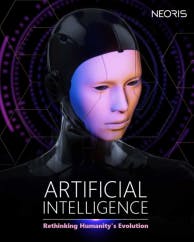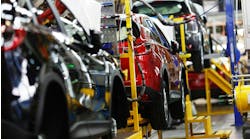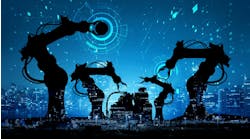A quick study of AI in the discrete space
If you’ve read any form of news lately—or had your robotic assistant read any news to you—you’re aware that artificial intelligence (AI) is buzzworthy. And the arguments are split between “AI will make life on Earth a utopia” and “AI will kill us all!!!”
We won’t wade into those waters here. But we will explore the narrower topic of AI applications in the discrete-manufacturing space. And joining us is Tony DeLima, CTO of NEORIS, which recently produced a report titled “Artificial Intelligence: Rethinking Humanity’s Evolution.”Have a look...
Smart Industry: How is AI used differently in the discrete-manufacturing space than in process?
Tony: Both types of manufacturing can distinctly benefit in the application of AI to their processes and Product Life Cycles. The focus is not what is different in these two sets of manufacturing processes, but on how to apply AI/Machine Learning (ML) as to generate the best value for the specific process/product in terms of quality, productivity, cost reduction, reduced downtime, and response to demand. Both have distinct challenges and opportunities for improvement. Here's one example: discrete manufacturing tends to involve higher labor relative to the output in most cases, so the priority on where the most value would be generated is different than in process manufacturing. Additionally, in process manufacturing, the production runs are usually made in large batches of the same product made to be identical with smaller number of inputs. Whereas, in discrete manufacturing, every finished assembly can be unique and usually requires a larger number of inputs that may be specific to that particular assembly. Hence, increasing the complexity in controlling the KPIs mentioned above and the response to changes in demand and other factors.
One particular application that has shown real benefits in manufacturing is in predictive maintenance for key/critical equipment. Being able to predict a failure and get ahead of unplanned downtime (and potential quality issues) has a direct impact to the manufacturer’s Overall Equipment Effectiveness (OEE). Furthermore, this application can optimize the preventive-maintenance schedules of equipment, reducing the cost of unnecessary maintenance in terms of labor, parts, and planned downtime.
Moreover, there is a broader application in the manufacturing-intelligence journey with a predictive-performance application. This is in using AI/ML on current measured high-level KPI’s that adds an intelligent learning layer beyond the current analytics and data visualization being done in running an operation. This could be in an AI/ML algorithm getting information on OEE, first-time-yield, pull volumes, on-time deliveries, machine utilization, etc., which are currently being captured to predict a surge in demand in a specific model, a possible shortage in inventory, or any other relationship that adds value and allows for proactive decisions in managing the operation.
Smart Industry: So are discrete manufacturers capitalizing on these opportunities?
Tony: Manufacturers are actively trying to figure out how to best apply new technology to improve their processes. The hesitance arises in a few places:
1. Identifying the right opportunities where AI/ML can help and be financially viable.
2. Understanding the current limitations, and managing the expectations on what AI/ML will enable them to do.
3. Trust in that the decisions/predictions that result from the AI applications are correct and not biased on how they were applied and trained
4. Difficulty in collecting the correct data from the processes/equipment to be used by the AI algorithm
5. Not having/knowing what is the right type of expertise needed in-house to apply and manage the implementation
6. Understanding the exposure or risk of their data (cybersecurity concerns)
Overall, manufacturers are starting to understand the massive potential in the correct application; many just don’t have the tools and resources to attack it.




